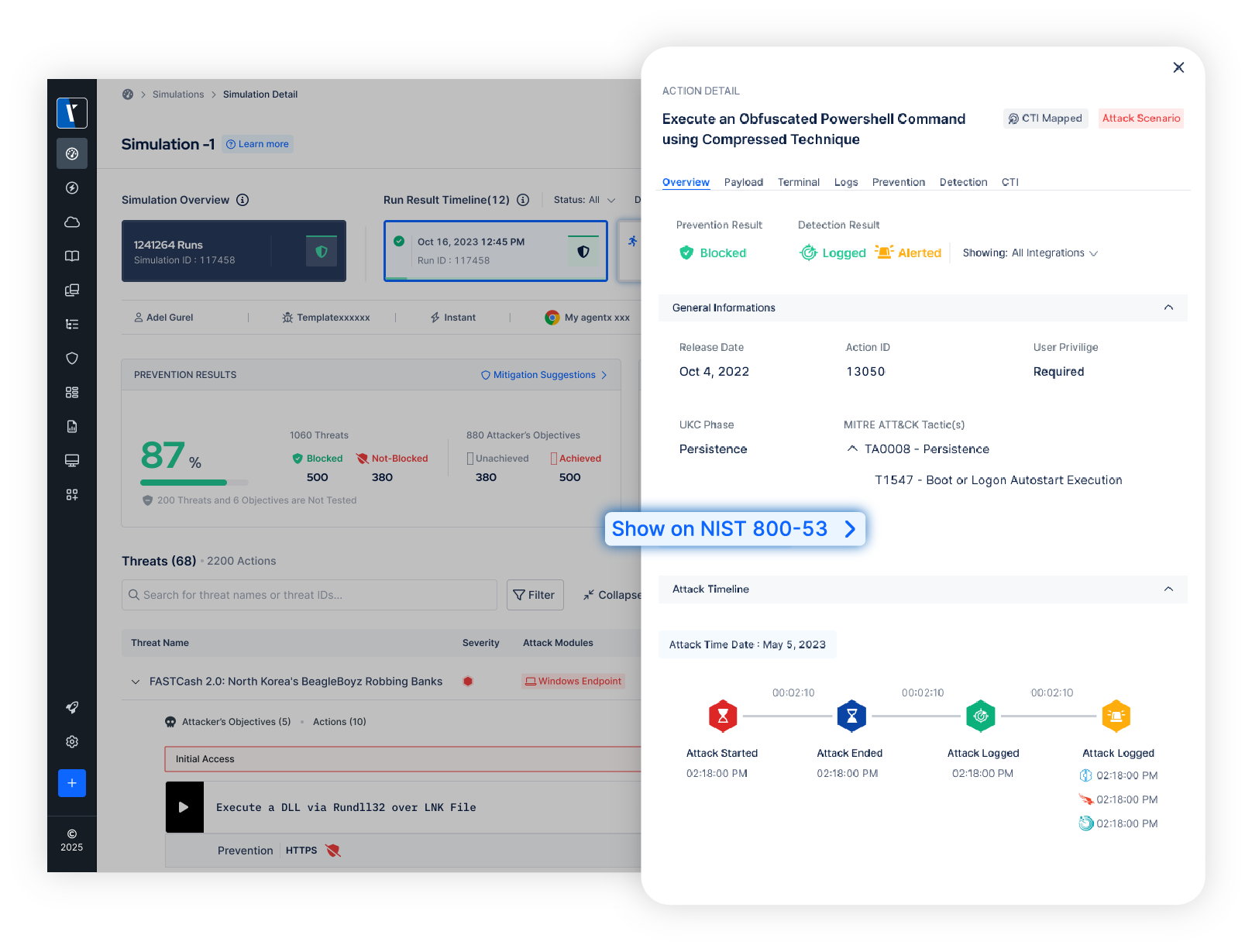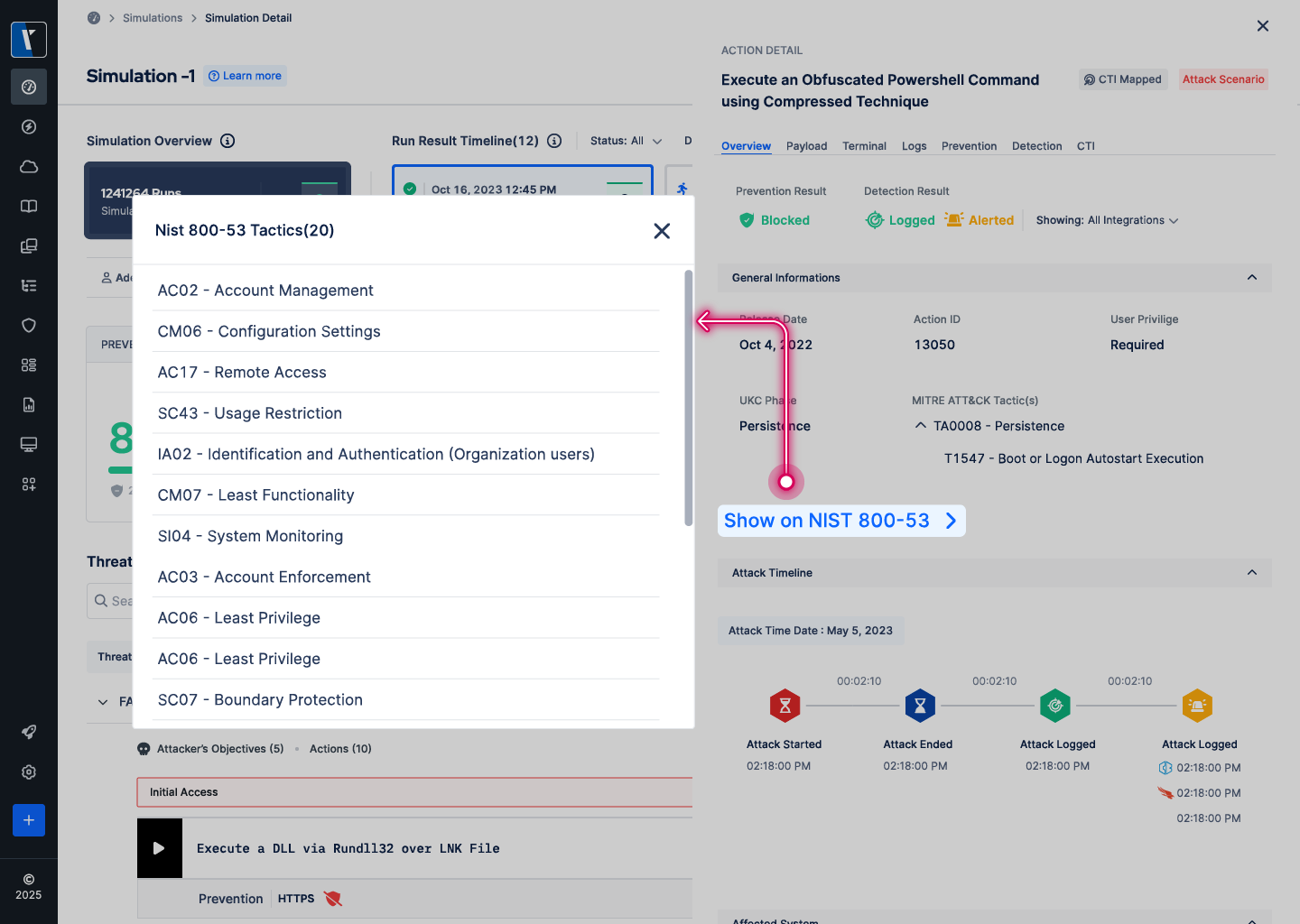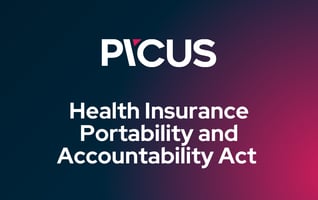Picus continuously validates prevention capabilities to ensure security controls are properly configured, up to date, and effective against potential threats.
NIST Cybersecurity Framework (CSF) Compliance
Picus helps security teams align with NIST CSF and NIST SP 800 series by validating controls and simplifying compliance efforts

What is NIST?
The National Institute of Standards and Technology (NIST) is a U.S. federal agency that develops standards, guidelines, and best practices to improve innovation and security across industries. In cybersecurity, NIST is best known for the NIST Cybersecurity Framework (CSF) and the NIST Special Publication (SP 800) series, which help organizations manage cyber risks, strengthen defenses, and demonstrate regulatory compliance.
By following NIST frameworks, enterprises can adopt a structured approach to cybersecurity that improves resilience, simplifies audits, and builds trust with stakeholders.
Support NIST CSF compliance and simplify audits.
Why NIST CSF Matters
The NIST Cybersecurity Framework (CSF) is one of the most trusted standards for managing cyber risks. In the United States, it is mandatory for federal agencies and contractors, and widely adopted across critical industries such as finance, healthcare, and energy.
Adopting the NIST Cybersecurity Framework not only helps meet compliance expectations in the U.S. but also provides a clear structure that organizations worldwide can follow to strengthen resilience and reporting. With Picus, you can turn these requirements into audit-ready validation.
What NIST Compliance Requires
-
Identify: Understanding assets, risks, and vulnerabilities
-
Protect: Applying safeguards to protect critical systems and data
-
Detect: Detecting anomalies and security events in time
-
Respond: Responding effectively to contain and mitigate incidents
-
Recover: Recovering operations and maintaining resilience
Benefits of Security Control Validation for NIST Compliance
Validate security controls across the five NIST CSF functions—Identify, Protect, Detect, Respond, and Recover—to confirm they perform as intended.
Automatically align each validation to relevant NIST SP 800-53 control families, simplifying compliance reporting and control assurance.
Generate audit-ready evidence, complete with timestamps and control-level outcomes, to demonstrate compliance confidently.
Prioritize weaknesses that matter most and apply remediation guidance with automated re-testing to verify fixes.
Show boards, regulators, and partners that compliance is backed by validated results, not just policies on paper.
What NIST CSF Compliance Requires
NIST Cybersecurity Framework (CSF) defines five core functions that form the foundation of effective cyber risk management. These functions guide organizations to identify vulnerabilities, safeguard assets, detect incidents, respond effectively, and recover with resilience.
Identify
Build visibility into assets, systems, data, and risks to define priorities for cybersecurity activities.
Organizations must map critical assets, understand threat exposure, and evaluate vulnerabilities to establish a baseline for security.
How to Address the Gap:
Picus continuously identifies and validates assets, exposures, and vulnerabilities, mapping results to NIST SP 800-53 controls to establish a real-time and risk-based security baseline.
Protect
Apply safeguards to limit or contain the impact of potential threats. This includes access controls, encryption, endpoint protections, and awareness programs.
How to Address the Gap:
Detect
Develop processes to identify anomalies, intrusions, and suspicious activity in time to minimize damage. Effective monitoring and logging are key.
How to Address the Gap:
Picus continuously validates detection capabilities to ensure security controls accurately identify suspicious activity in time.
Respond
Take effective action to contain, analyze, and mitigate the impact of security incidents. Response requires coordination, communication, and rapid remediation.
How to Address the Gap:
Picus provides vendor-specific prevention signatures and detection rules for identified security gaps, enabling faster remediation and stronger protection against validated threats.
Recover
Restore operations and services after an incident while incorporating lessons learned to improve resilience. Recovery ensures business continuity and stakeholder confidence.
How to Address the Gap:
Picus validates the recovery of security controls to ensure they are restored, effective, and strengthened through lessons learned to enhance resilience and business continuity.
Reduce Reduce Compliance Risk with Security Control Validation for NIST CSF
Picus Platform helps close the gap between compliance on paper and control effectiveness in practice.
Picus enables organizations to:
-
Validate safeguards required under the NIST Cybersecurity Framework (CSF) and NIST SP 800-53
-
Continuously assess control performance against real-world adversary techniques mapped to MITRE ATT&CK
-
Strengthen audit readiness with automated, NIST-aligned reporting
-
Identify compliance gaps and prioritize remediations across hybrid infrastructure

Picus for Compliance

.png?width=353&height=200&name=Picus-MITRE-Pillar-Page-Preview%20(1).png)

.png?width=3200&height=323&name=Pattern(1).png)
See the
Picus Security Validation Platform
Request a Demo
Submit a request and we'll share answers to your top security validation and exposure management questions.
Get Threat-ready
Simulate real-world cyber threats in minutes and see a holistic view of your security effectiveness.
Frequently Asked Questions about NIST Compliance
The NIST Cybersecurity Framework (CSF) is a set of guidelines developed by the U.S. National Institute of Standards and Technology. It defines five functions—Identify, Protect, Detect, Respond, and Recover—that help organizations manage cyber risks in a structured way.
NIST compliance is mandatory for U.S. federal agencies and contractors. It is also widely adopted by critical industries such as finance, healthcare, and energy. Outside the U.S., many organizations use the NIST CSF voluntarily as a best practice to improve resilience and align with global frameworks like ISO 27001.
No. NIST compliance requirements mainly apply in the United States. However, the framework has influenced cybersecurity programs globally, where it is used as guidance to strengthen risk management and reporting.
The NIST CSF provides a high-level framework for managing cyber risks, while NIST Special Publication (SP) 800-53 offers a detailed catalog of security and privacy controls. Together, they guide organizations in both strategy and implementation.
Picus supports NIST compliance by continuously validating security controls against real-world threats. This helps organizations confirm control effectiveness, close compliance gaps, and generate audit-ready evidence for assessments.
NIST compliance helps organizations build resilience, reduce risk exposure, and meet regulatory expectations. It also simplifies audits and strengthens trust with stakeholders.